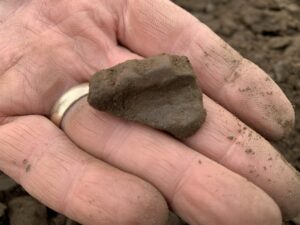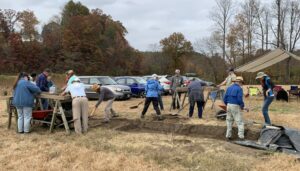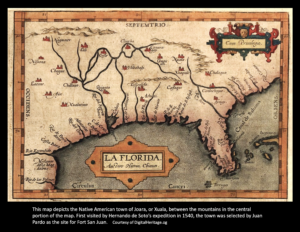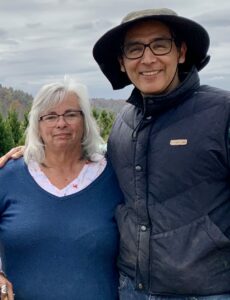1444
First African captives taken to Portugal
1450
Johannesburg Gutenberg moveable type printing press
1453
Fall of Constantinople
1489
Leonardo da Vinci dissects corpses
1492
Columbian Exchange
1517
Martin Luther and Protestant Reformation
1519
Cortez begins conquest of South America
1543
Polish astronomer Copernicus’ heliocentric theory; Girolamo Fracastoro germ theory published three years later.
1526
Mughal Empire
1568
Native Americans push out Spaniards at Joara (Xuala)
1600
Giordano Bruno championed a much more expansive understanding of the Earth’s place in the universe, with the Sun being just one star among all the others, and is burned at stake; Malik Ambar in power
1610
Galileo telescopic observations
1619
Jamestown, VA, 20 Africans; Francis Bacon publishes Novum Organum Scientiarum (‘new instrument of science’) a year later, challenging Aristotle’s methodology of coming to a scientific ‘truth’ by way of argument (using his logical rules), arguing instead that ‘truth’ required evidence from systematic observation. The title of the book was a reference to Aristotle’s Organon, his treatise on logic and syllogism. Lays the groundwork for the ‘scientific method,’ consisting in systematic observation, measurement, experiment, and the formulation, testing, and modification of hypotheses—a proposed explanation for a phenomenon—that can be tested, but provisionally accepted (different from a scientific theory, which is an explanation that can be repeatedly tested … yet accuracy is different from precision).
1628
William Harvey explains the function of heart to circulate blood; Robert Boyle, a founder of modern chemistry, performs controlled experiments and publishes, having devised the vacuum chamber (air pump) and defining the modern idea of an ‘element.’
1640
racial codification begins in Chesapeake
1676
Nathaniel Bacon’s Rebellion; Antoine van Leeuwenhoek, pioneer in microbiology, observes bacteria in water; and Danish astronomer Ole Rømer measures the speed of light by studying the motion of Jupiter’s moon Io. When Earth was moving away from Jupiter in its orbit, Io appeared to move more slowly across the sky, and when Earth was moving toward Jupiter, Io appeared to move more quickly. Rømer deduced that this variation in Io’s apparent motion was due to the finite speed of light. By comparing observations at different times of the year, he estimated that light had a finite speed and calculated it to be roughly 140,000 miles per second (186,282 miles per second). (Further refined by French physicist Hippolyte Fizeau in 1849, measuring with mirrors.)
1687
Isaac Newton three laws of motion and gravitation in Principia
1688
Glorious Revolution, Germantown, PA, Quaker petition against slavery
1712
Thomas Newcomb builds first practical dream engine
1757
John Campbell invents sextant, enables sailors to measure longitude accurately for the first time
1776
Declaration of Independence
1789
French Revolution
1791
Steamboat invented by John Fitch; Bill of Rights ratified
1796
Dr. Edward Jenner introduces idea of vaccinations (taken from Ottoman Empire, taken from India) with small pox on young English boy.
1803
Louisiana Purchase
1804
Haitian Revolution
1808
British and U.S. end slave trade
1814
George Stephenson builds first practical steam locomotive
1824
Peru gains independence
1831
Michael Faraday discovers electro-magnetic current making electric generators and motors AND Nat Turner revolt, North Carolina law then prohibits teaching enslaved to read or write.
1833
Britain abolishes slavery
1835 – Sol, an enslaved African American (of General Hamilton), known to have assisted in setting up escapes for others with Levi and Vestal Coffin almost twenty years earlier uses the Underground Railroad to gain his own freedom.
1839
Alexandre Edmond Becquerel discovered the photovoltaic effect which explains how electricity can be generated from sunlight.
1846
First successful surgical operation using anesthesia by William T.G. Morton
1848
Seneca Falls Convention
1854
Broad Street cholera outbreak in London to be studied by John Snow, shows a clear understanding of Girolamo Fracastoro’s pioneering work on germ theory from 1546. Snow is challenging the dominant miasma theory of ‘bad air’ first proposed by Galen. Smallpox vaccination in use in Europe, with similar treatments in India dating to 1,000 C.E.
1857
Dred Scott case
1859
Charles Darwin Origin of Species; John Brown raid at Harpers Ferry; Louis Pasteur begins to amass evidence to support Germ Theory of Disease
1865
13th Amendment abolishing slavery in the U.S.
1873
James Maxwell publishes Treatise on Electricity and Magnetism
1876
Alexander Graham Bell patents telephone
1880
Thomas Edison patents incandescent electric lamp
1884
Berlin Conference divides up Africa into European colonies
1896
Plessy v. Ferguson, separate but equal made Constitutional in the U.S.
1903
Marie Curie wins Nobel Prize for work on radio activity; Wright Brothers first engine-powered airplane
1905
Albert Einstein theory of special relativity, which is an explanation of how speed affects mass, time, and space, and includes a way for the speed of light (c) to define the relationship between energy (E) and matter where small amounts of mass (m) can be interchangeable with enormous amounts of energy, as defined by E = mc^2; general relativity in 1916, a theory of gravity, with the basic idea that instead of gravity being an invisible force that attracts objects to one another, gravity is a curving or warping of space–the more massive an object, the more it warps the space around it.
1907
Plastic is invented based on synthetic polymer called Bakelite
1908
Dr. John Leal conceived and implements first disinfectant of a U.S. drinking water supply using chlorine; Henry Ford launches Ford Model T
1917
Russian Revolution
1919
Francis Aston pioneers first mass spectrometer, which is used to discover many isotopes.
1920
19th Amendment women’s suffrage; first radio broadcast in Pittsburgh, PA
1928
Penicillin antibiotic discovered by Alexander Fleming; TV sets put in three homes with programming beginning; invention of coolant chemicals for air conditioning and refrigeration
1929
Stock market crash, Great Depression
1934
Karl Popper’s falsifiability; Lev Vygotsky ‘tools and results’
1945
Atomic bomb and end of WWI
1947
India gains independence AND Carbon-14 dating is invented by University of Chicago chemist. Radioactive carbon-14 (an isotope of carbon) has a half-life of about 5,700 years. In 1947 American chemist Willard Libby figured that plants absorb some of the trace carbon-14 from the atmosphere (some nitrogen turning into carbon-14 when hit with cosmic rays) while they absorbed ordinary carbon in photosynthesis. Once the plant died it couldn’t absorb any more carbon of any kind, and the carbon-14 it contained would decay at its usual rate without being replaced. By finding the concentration of carbon-14 left in the remains of a plant, one could calculate the amount of time since the plant had died. With this technique we could determine the age of plant-based artifacts (wood, parchment, textiles) up to 45,000 years old. This has allowed estimates of the age prehistoric dwellings, and ancient documents and clothes, among other things. Also in 1946 a Welsh chemist John Beynon constructed the first mass spectrometer designed to study organic compounds unrelated to petroleum; there was also the invention of the transistor, allowing electronic equipment smaller, leading to computer revolution. So, in this year we’ve got India’s independence, discovery of carbon-14 dating, mass spectrometer to study organic compounds, and the transistor!
1953
Structure of DNA is discovered
1954
Jean Piaget theory of development AND Algerian war of independence begins AND Brown v. Board of Education
1955
Jonas Salk develops first polio vaccine
1957
Sputnik launched by Soviet Union; NASA formed within a year
1959
Invention of the silicon chip; Abu arrives to U.S. to study engineering at the Georgia Institute of Technology
1960
Woolworth sit-in and 16 African nations gain independence
1962
Thomas Kuhn’s Structure of Scientific Revolutions
1965
Voting Rights Act AND Birth Control pill made legal for married couples
1971
U.S. Voting age lowered from 21 to 18, 26th Amendment
1979
Iranian Revolution
1983
Discovery of HIV virus that causes AIDS
1988
Dr. Lenora Fulani gets on ballot in all fifty states running for U.S. President; the first woman and African American to do so
1989
Fall of Berlin Wall; World Wide Web invented by Tim Berners-Lee
1991
Collapse of the Soviet Union
2003
Complete sequencing of human genome
2008
Barack Obama elected U.S. President; Samina born
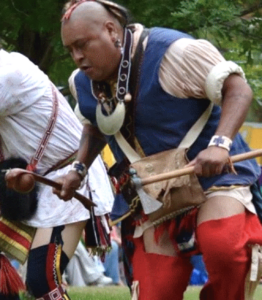 Fort San Juan, the earliest European settlement in the interior of what is now the U.S. was built in the town of Joara/Xuala (the Berry archeological site) near Morganton in western North Carolina. African-descended Iberians and Africans may have been part of the expedition (no archival records state this but can be inferred from the initial expedition and expeditions of their kind), suggesting early contact and an African Diasporic presence in the Carolinas prior to the seventeenth century.
Fort San Juan, the earliest European settlement in the interior of what is now the U.S. was built in the town of Joara/Xuala (the Berry archeological site) near Morganton in western North Carolina. African-descended Iberians and Africans may have been part of the expedition (no archival records state this but can be inferred from the initial expedition and expeditions of their kind), suggesting early contact and an African Diasporic presence in the Carolinas prior to the seventeenth century.